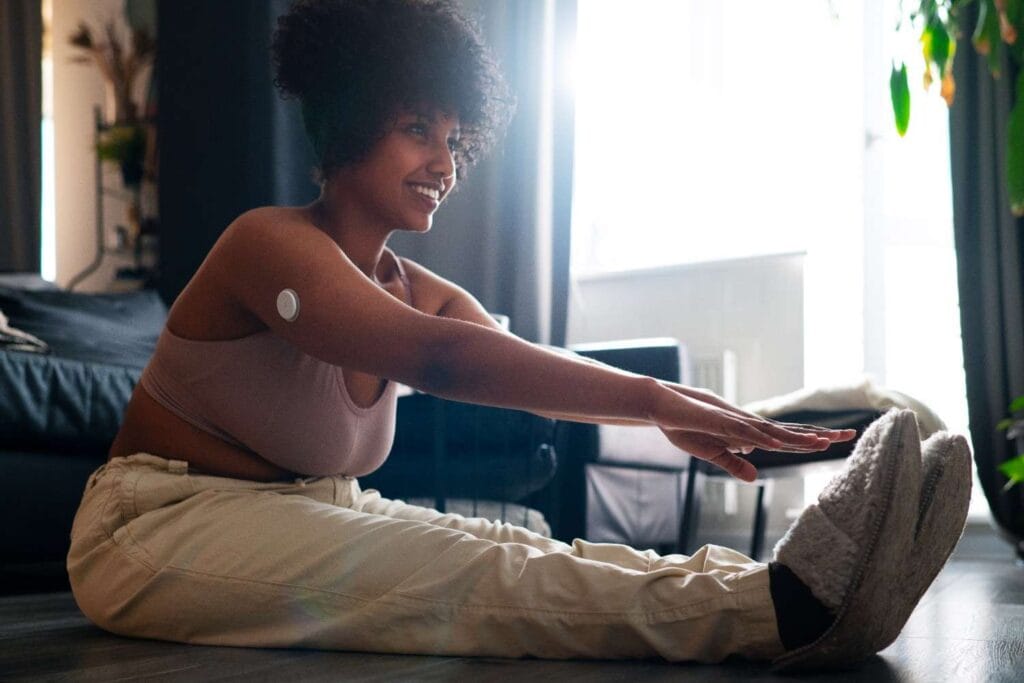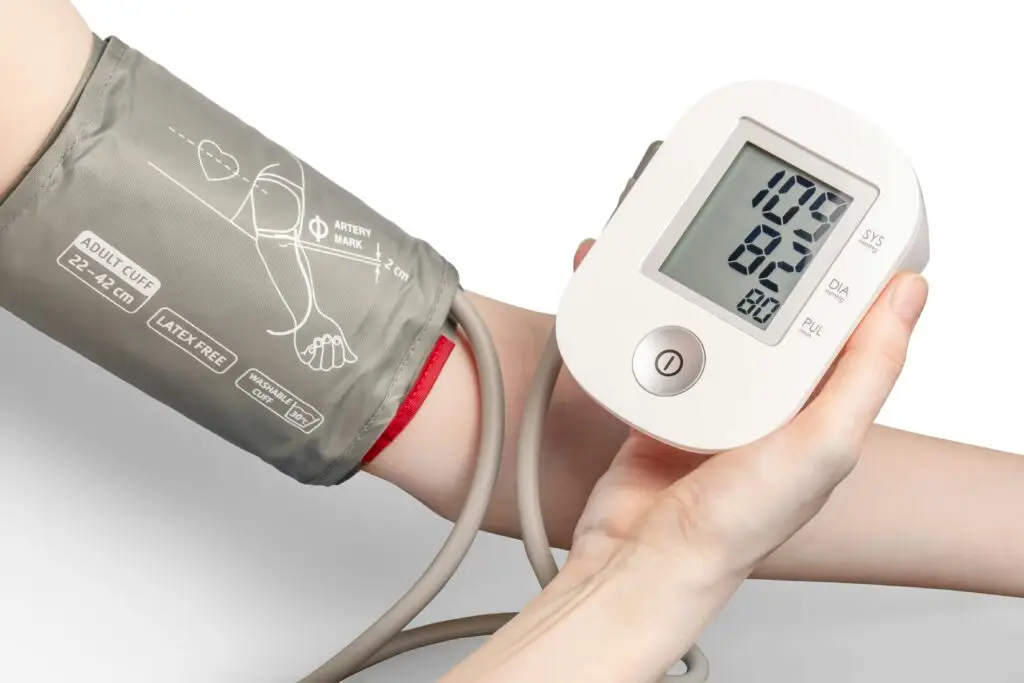
Living with diabetes, whether type 1 or type 2 can feel like navigating a maze. But here’s the good news: exercise is like a trusty map, guiding you toward better health and vitality. Paired with nutrition therapy, physical activity is a cornerstone of diabetes management. In this blog, we’ll explore why exercise is a game-changer, how to start safely, when to hit pause, and tailored tips for each diabetes type. Plus, we’ll share practical advice to make exercise a joyful part of your routine.
Why Exercise Is a Must for Diabetes Management
Exercise isn’t just about fitting into your favorite jeans, it’s a powerful tool for managing diabetes. Research, including the 2025 American Diabetes Association Standards of Care, highlights its role in improving glycemic control, reducing complications, and enhancing overall well-being. Here’s why it’s so important:
- Stabilizes Blood Sugar: Physical activity helps your body use insulin more effectively, lowering blood glucose levels. It reduces spikes and crashes, keeping your diabetes in check. Studies show exercise can lower HbA1c by up to 0.7%, even without weight loss (Harvard Health, 2023).
- Supports Weight Management: For type 2 diabetes, maintaining a healthy weight is crucial since excess weight worsens insulin resistance. Exercise burns calories and builds muscle, aiding weight loss and maintenance. The 2025 Standards recommend structured physical activity for cardiometabolic benefits (ADA, 2025).
- Boosts Heart Health: Diabetes increases your risk of heart disease, but regular exercise strengthens your heart, improves circulation, and lowers blood pressure and cholesterol. This reduces the risk of cardiovascular complications, a major concern for diabetes patients.
- Lifts Your Mood: Managing diabetes can be stressful. Exercise releases endorphins, natural mood boosters that reduce anxiety, improve sleep, and enhance mental well-being. It’s like a daily dose of happiness!
- Enhances Insulin Sensitivity: For type 2 diabetes, exercise makes your cells more responsive to insulin, improving glucose uptake. Research shows that both aerobic and resistance training can significantly boost insulin sensitivity (Cleveland Clinic Journal of Medicine, 2017).
- Reduces Inflammation: Recent studies indicate that exercise reduces inflammation, a key factor in diabetes complications. By regulating glucose and lipid metabolism, it helps protect your body from long-term damage (World Journal of Diabetes, 2024).
The 2025 Standards also emphasize breaking up sedentary time every 30 minutes for glycemic benefits, meaning even small movements, like standing or stretching can make a difference. Exercise isn’t just a workout; it’s a lifestyle shift that empowers you to thrive with diabetes.
How to Get Started: Your Roadmap to Fitness
Starting an exercise routine with diabetes might feel overwhelming, but it’s all about taking small, smart steps. Here’s how to begin safely and sustainably:
Before You Start
- Consult Your Healthcare Team: Before diving in, talk to your doctor or a diabetes educator, especially if you have complications like neuropathy, retinopathy, or heart issues. They can tailor a plan to your needs.
- Check Blood Sugar Levels: Test your glucose before exercising to ensure it’s in a safe range (typically 100–250 mg/dL). This helps you avoid dangerous highs or lows.
- Set Realistic Goals: Start with 10–15 minute sessions, like a brisk walk, and gradually increase duration or intensity. Aim for activities you enjoy to stay motivated.
- Gear Up: Invest in supportive shoes to protect your feet, as diabetes can increase the risk of foot injuries. Consider a fitness tracker to monitor activity and heart rate.
During Exercise
- Monitor Blood Sugar: For longer workouts (over 30 minutes), check your glucose mid-session to track how your body responds. This is especially critical for type 1 diabetes.
- Stay Hydrated: Drink water to prevent dehydration, which can affect blood sugar levels. Carry a water bottle to stay on top of it.
- Listen to Your Body: If you feel dizzy, shaky, or unusually tired, stop immediately. These could be signs of hypoglycemia or other issues.
After Exercise
- Recheck Blood Sugar: Exercise can lower glucose levels for hours afterward, so monitor to catch any delayed drops, particularly for type 1 diabetes.
- Refuel Wisely: If needed, have a balanced snack (e.g., an apple with peanut butter) to stabilize blood sugar, especially after intense workouts.
- Cool Down: End with gentle stretches to prevent muscle soreness and stabilize glucose levels.
Choose activities that spark joy, whether it’s dancing to your favorite tunes, swimming, or a leisurely bike ride. Consistency beats intensity, so aim for regular movement over perfection.
When Not to Exercise: Know Your Limits
While exercise is a superpower, there are times when it’s best to take a break. Here’s when to avoid physical activity to stay safe:
- High Blood Sugar (>250 mg/dL with Ketones): If your glucose is too high, especially with ketones (common in type 1 diabetes), exercise can raise it further, risking ketoacidosis. Check with your doctor for your personal threshold.
- Low Blood Sugar (<100 mg/dL): Exercising with low glucose can lead to hypoglycemia. Eat a small carb-rich snack (e.g., 15g of carbs like a banana) and recheck before starting.
- Illness or Infection: When you’re sick, your body is under stress, and blood sugar can fluctuate unpredictably. Rest until you’re recovered.
- Injury or Pain: Diabetes can slow healing, so avoid exercise if you have injuries, foot ulcers, or significant pain to prevent worsening.
- Extreme Weather: Hot or cold conditions can affect blood sugar regulation. Opt for indoor activities if the weather is extreme.
The 2025 Standards highlight the importance of individualized care, so always consult your healthcare provider to determine when it’s safe to exercise (ADA, 2025).
Exercises by Diabetes Type: Tailored Moves for You
Different types of diabetes require slightly different approaches to exercise. Here’s what works best, backed by research:
Type 1 Diabetes
Since your body doesn’t produce insulin, exercise requires careful coordination with insulin doses and carb intake to prevent hypoglycemia. Research shows aerobic and resistance training both improve glycemic control (NCBI, 2025).
- Aerobic Exercises: Aim for 30 minutes most days of moderate activities like walking, cycling, or swimming. These boost endurance and help regulate blood sugar.
- Strength Training: Incorporate resistance exercises (e.g., lifting weights, resistance bands) 2–3 times a week to build muscle, which aids glucose uptake.
- High-Intensity Interval Training (HIIT): Short bursts of intense exercise (e.g., 30 seconds of sprinting followed by rest) can be effective but require close monitoring due to rapid glucose changes.
Type 2 Diabetes
Type 2 diabetes is often linked to insulin resistance and weight, so a mix of exercises is ideal to improve insulin sensitivity and manage weight. Studies show 150 minutes of weekly aerobic activity plus resistance training yields significant benefits (ScienceDirect, 2023).
- Aerobic Exercises: Aim for 150 minutes per week of moderate activities like brisk walking, jogging, or dancing. These burn fat and improve heart health.
- Resistance Training: Do bodyweight exercises (e.g., squats, push-ups) or use dumbbells 2–3 times a week to enhance insulin sensitivity and muscle mass.
- Flexibility and Balance: Add yoga or tai chi to improve mobility and reduce stress, which can indirectly help blood sugar control.
Start slow, and adjust based on how your body responds. Apps like MyFitnessPal or wearable devices can help track progress and stay motivated.
Exercise Safety: Your Guide to Staying Protected
Safety is paramount when exercising with diabetes. Here are essential tips to keep you safe and confident:
- Carry Identification: Wear a medical ID bracelet or carry a card stating you have diabetes in case of emergencies.
- Keep Quick-Acting Carbs Handy: Have glucose tablets, juice, or candy nearby to treat low blood sugar quickly. Aim for 15–30g of fast-acting carbs if hypoglycemia occurs.
- Exercise with a Buddy: Especially when starting, a partner can provide support or help if you feel unwell.
- Know Hypoglycemia Signs: Watch for shakiness, sweating, dizziness, confusion, or irritability. Stop, check your sugar, and treat if low.
- Avoid Extreme Conditions: Hot or cold weather can disrupt blood sugar regulation. Exercise indoors during extreme temperatures.
- Warm Up and Cool Down: Start with 5–10 minutes of light activity (e.g., walking) and end with stretches to prevent injury and stabilize glucose.
The 2025 Standards also note that for those with type 2 diabetes and heart failure, GLP-1 receptor agonists can improve exercise function, highlighting the role of integrated care (ADA, 2025).
Exercise Advice by Diabetes Type: Personalized Tips
Here’s tailored advice to make exercise work for your specific type of diabetes:
Type 1 Diabetes
- Monitor Closely: Check blood sugar before, during, and after exercise to understand your body’s patterns. Work with your doctor to adjust insulin or carb intake. Research shows variability in exercise response due to genetics and environment, so personalization is key (NCBI, 2025).
- Be Prepared: Always carry a snack (e.g., granola bar) to manage sudden glucose drops, especially during aerobic activities.
- Stay Consistent: Regular routines help predict how exercise affects your blood sugar, making management easier.
Type 2 Diabetes
- Mix It Up: Combine cardio (e.g., brisk walking) and strength training (e.g., dumbbell exercises) for maximum benefits. Studies show this combo improves glycemic control and lipid profiles (BMC Sports Science, 2023).
- Focus on Weight Loss: If weight is too high, aim for gradual fat loss to boost insulin sensitivity. Even a 5–10% weight reduction can make a big difference.
- Build a Habit: Incorporate daily movement, like a 10-minute walk after meals, to keep blood sugar steady. Breaking up sedentary time is critical (ADA, 2025).
For both types, digital health platforms can offer personalized exercise plans, making it easier to stick to your goals (Life Conceptual, 2025).
Real-Life Inspiration: A Success Story
Meet Sarah, a 45-year-old with type 2 diabetes who transformed her health through exercise. Initially hesitant, she started with 15-minute walks after dinner, gradually adding yoga and strength training. By monitoring her blood sugar and working with her doctor, she lowered her HbA1c from 8.2% to 6.5% in six months. “Exercise made me feel in control,” she says. “It’s not just about my diabetes, it’s about feeling alive.” Stories like Sarah’s show that small steps can lead to big wins.
Step Into Your Power
Living with diabetes doesn’t mean living with limitations. Exercise, paired with nutrition therapy, is your superpower for managing blood sugar, boosting your heart, and lifting your spirit. Whether you have type 1 or type 2 diabetes, start small, stay safe, and work with your healthcare team to create a plan that fits your life.
Citations:
- American Diabetes Association. (2025). Summary of Revisions: Standards of Care in Diabetes—2025. Diabetes Care, 48(Supplement_1), S6-S12. [https://doi.org/10.2337/dc25-S005]
- Colberg, S. R., et al. (2016). Physical Activity/Exercise and Diabetes: A Position Statement of the American Diabetes Association. Diabetes Care, 39(11), 2065-2079. [https://diabetesjournals.org/care/article/39/11/2065/37249/Physical-Activity-Exercise-and-Diabetes-A-Position]
- Kirwan, J. P., et al. (2017). The Essential Role of Exercise in the Management of Type 2 Diabetes. Cleveland Clinic Journal of Medicine, 84(7 Suppl 1), S15-S21. [https://www.ccjm.org/content/84/7_suppl_1/S15]
- Harvard Health. (2023). The Importance of Exercise When You Have Diabetes. [https://www.health.harvard.edu/staying-healthy/the-importance-of-exercise-when-you-have-diabetes]
- World Journal of Diabetes. (2024). Mechanism Underlying the Effects of Exercise Against Type 2 Diabetes. [https://www.wjgnet.com/1948-9358/full/v15/i8/1704.htm]

